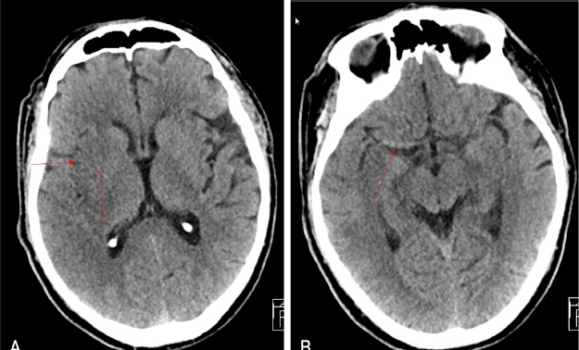Stories
» Go to news mainExophthalmos following mechanical thrombectomy for anterior circulation stroke: A retrospective study and review of literature

New publication from Dr. David Volders. See full text.
Abstract
Background: Anecdotal cases of exophthalmos after acute mechanical thrombectomy have been described. We sought to estimate the incidence in a large cohort of patients with acute anterior circulation stroke treated with mechanical thrombectomy. Secondarily, we aimed to evaluate the underlying mechanism and to differentiate it on imaging from other pathology with similar clinical orbital features.
Methods: Between November 2016 and November 2018, we performed a retrospective single-center study of 250 patients who underwent anterior circulation mechanical thrombectomy. Development of exophthalmos was independently evaluated by two readers on preprocedure and 24-h postprocedure non-contrast cerebral CT.
Results: In the mechanical thrombectomy cohort, six individuals (2.4%) developed interval ipsilateral exophthalmos at 24 h. Of these, at least two patients developed clinical symptoms. There was almost perfect agreement between assessments of the two readers (Cohen's kappa = 0.907 (95% confidence interval: 0.726, 1.000)). In two patients, there was delayed ophthalmic artery filling on digital subtraction angiography. None of the patients had features of a direct carotid-cavernous fistula.
Conclusions: Exophthalmos is not uncommon after mechanical thrombectomy (2.4%). The underlying mechanism is difficult to confirm, but it is most likely due to orbital ischemia from hypoperfusion or distal emboli.
Recent News
- Dr. Abraham receives CAIR Award
- Thank you to everyone who joined us for the 30th anniversary Radiology Research Day on May 8th!
- Nova Scotia’s Lung Screening Program expanding to Cape Breton, eastern mainland
- Donor‑supported nuclear medicine technology attracts top medical talent to the QEII
- Building Critical Skills at the Dalhousie Physician Leadership Workshop for Women in Radiology
- CAR/CSTR Practice Guideline on CT Screening for Lung Cancer
- CAR Practice Guideline on Bone Mineral Densitometry Reporting: 2024 Update
- CAR/CSACI Practice Guidance for Contrast Media Hypersensitivity
